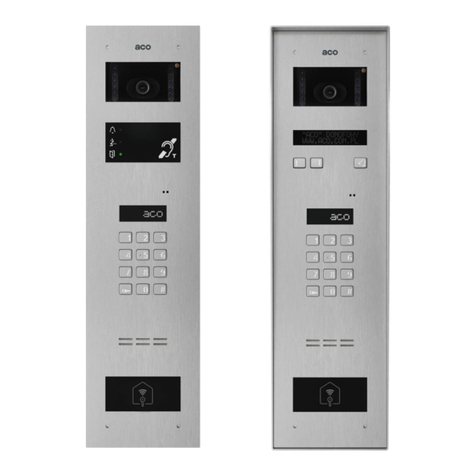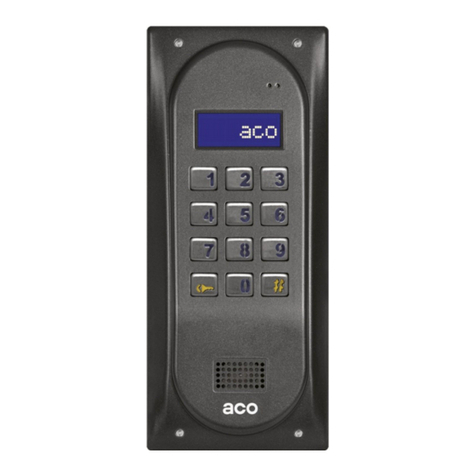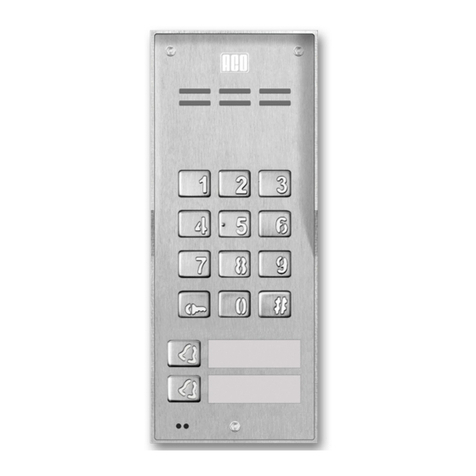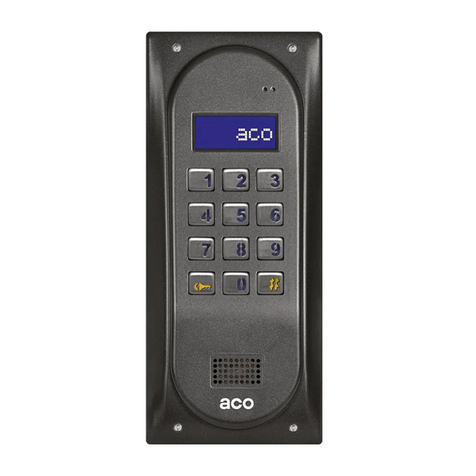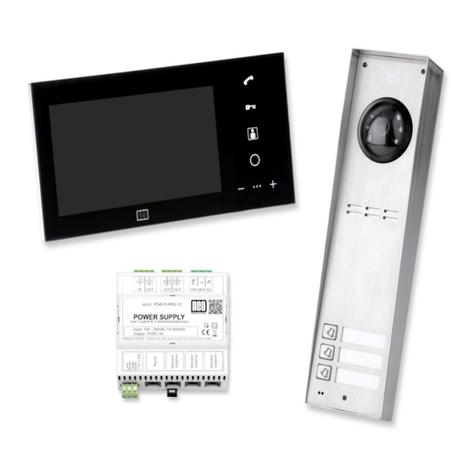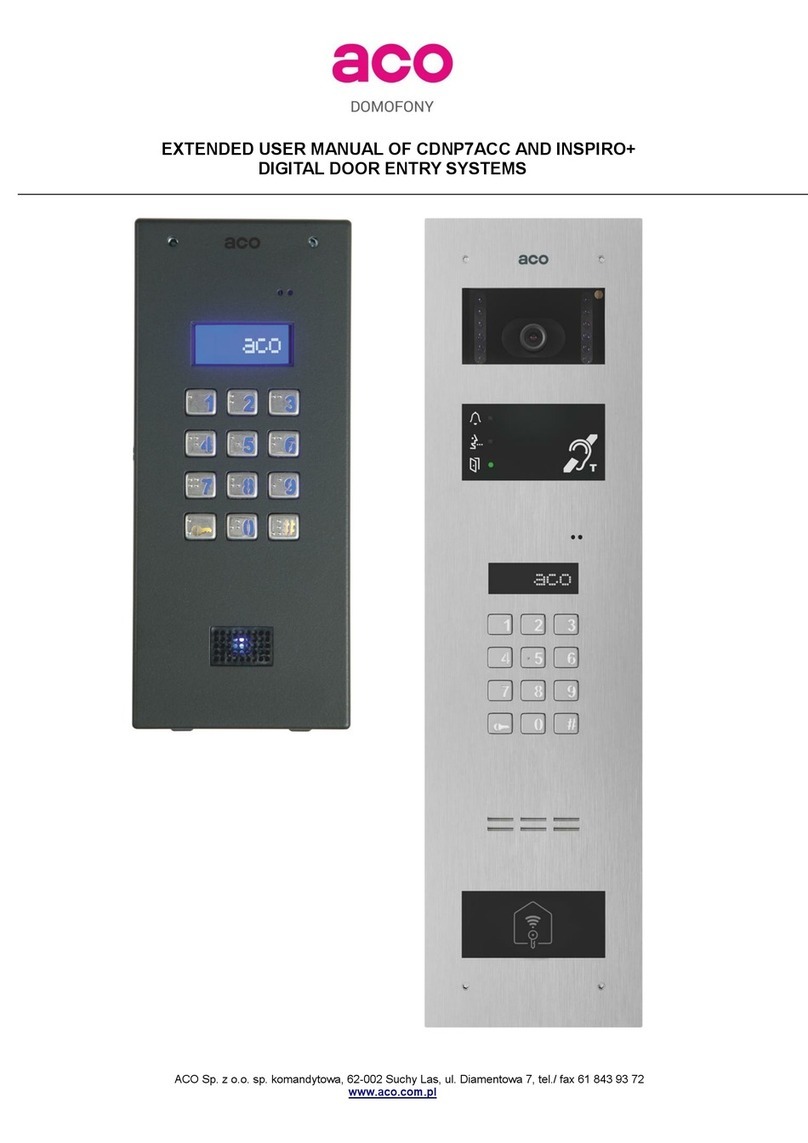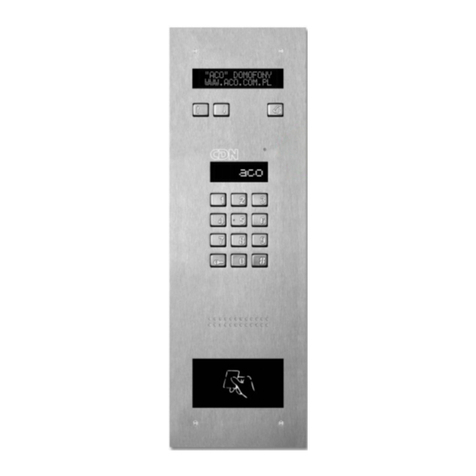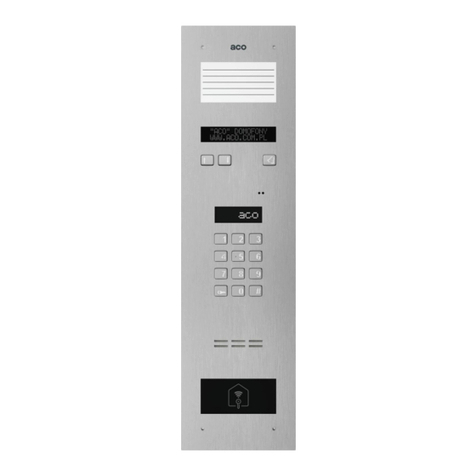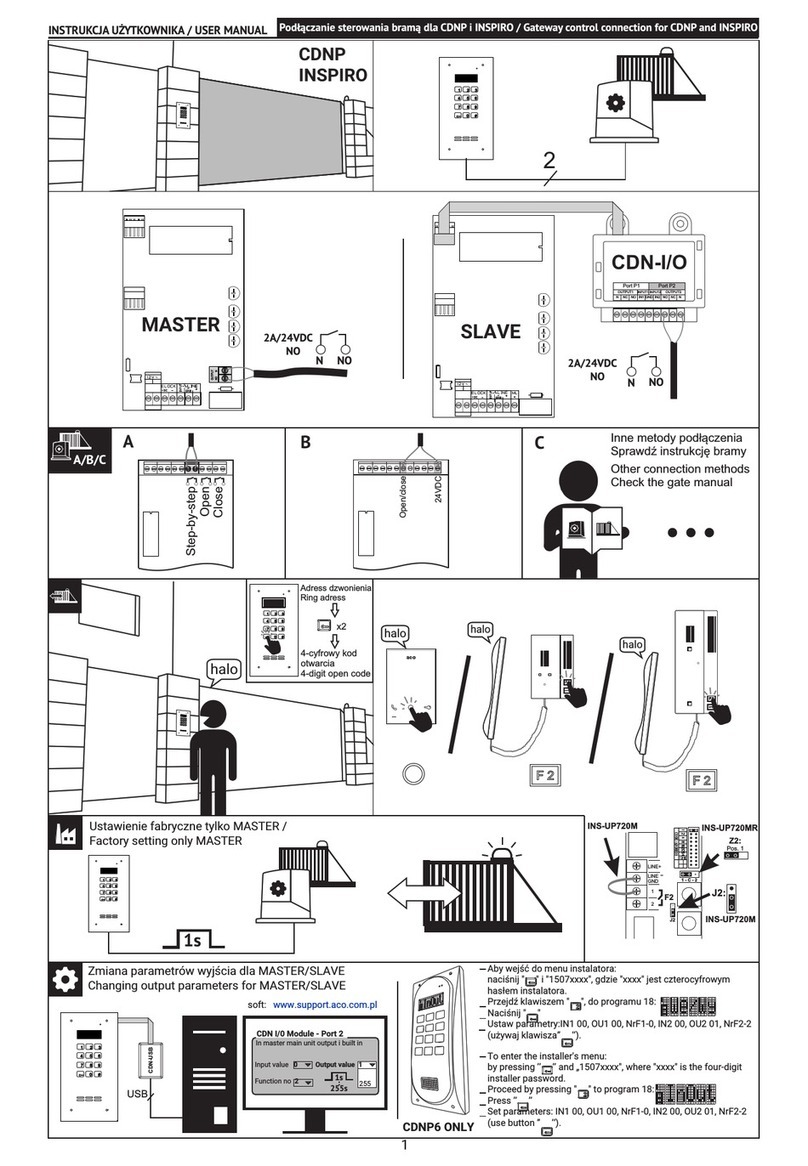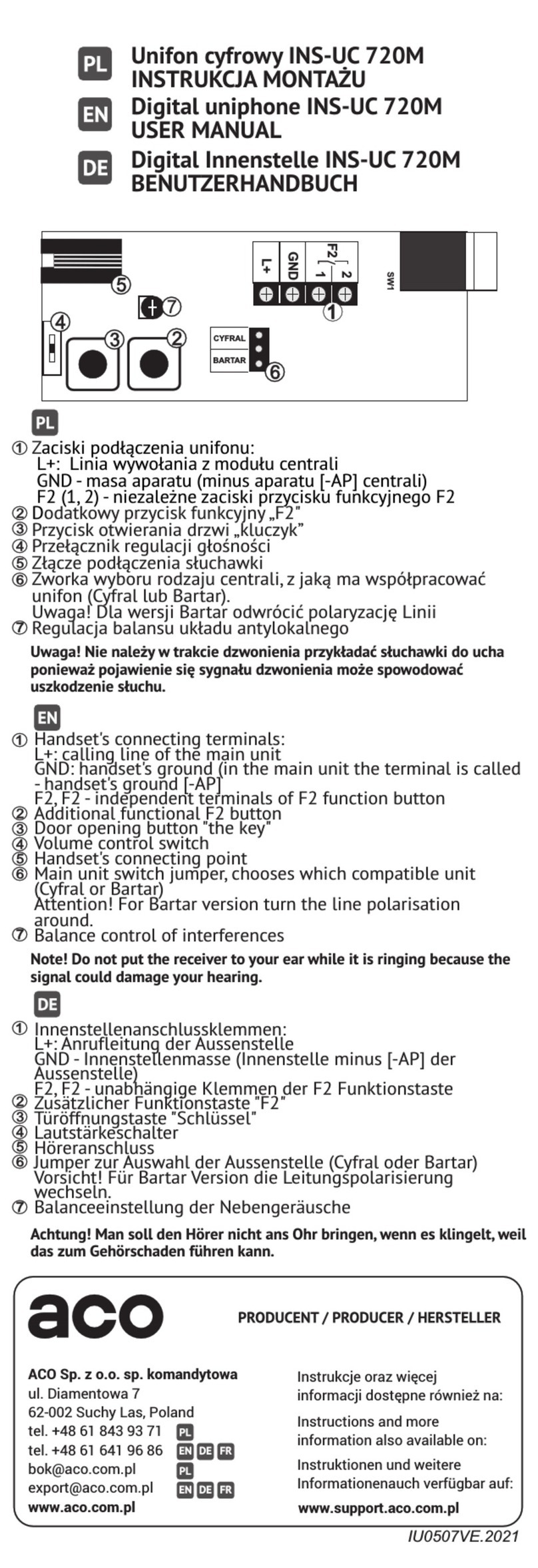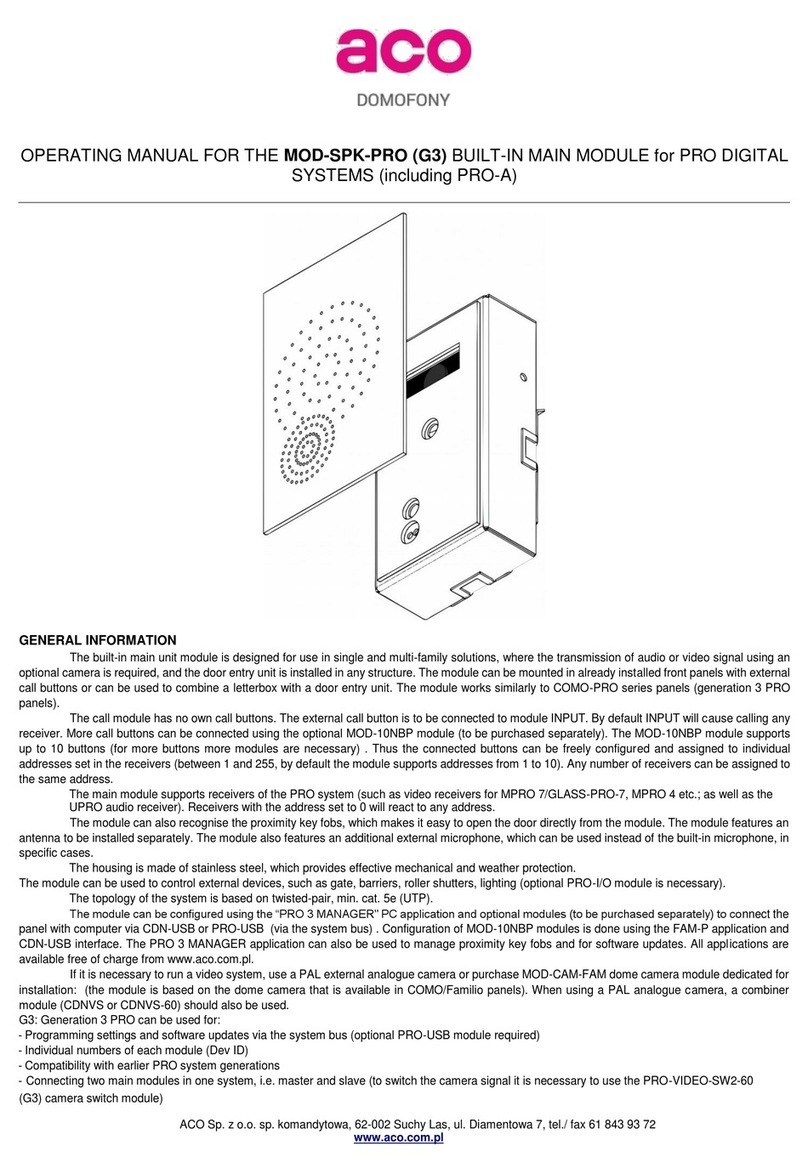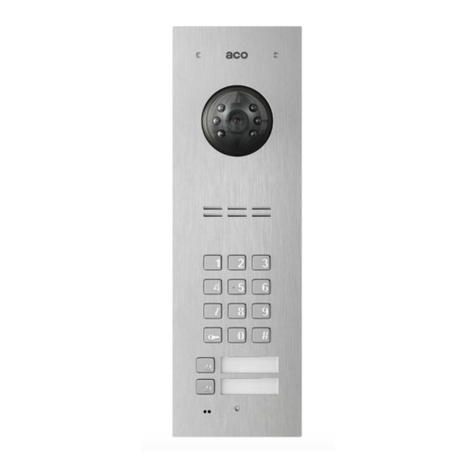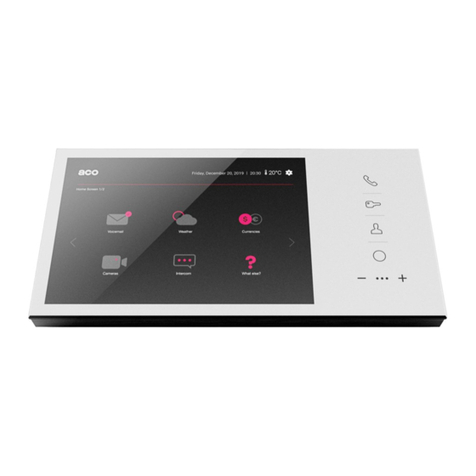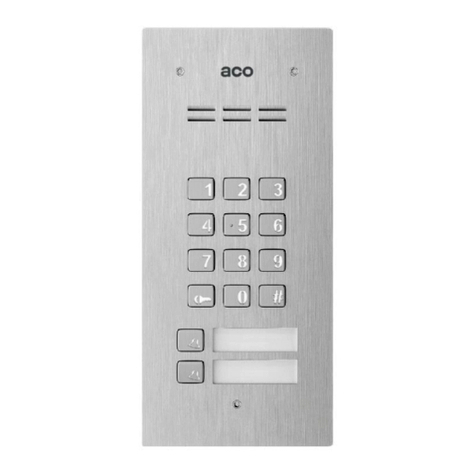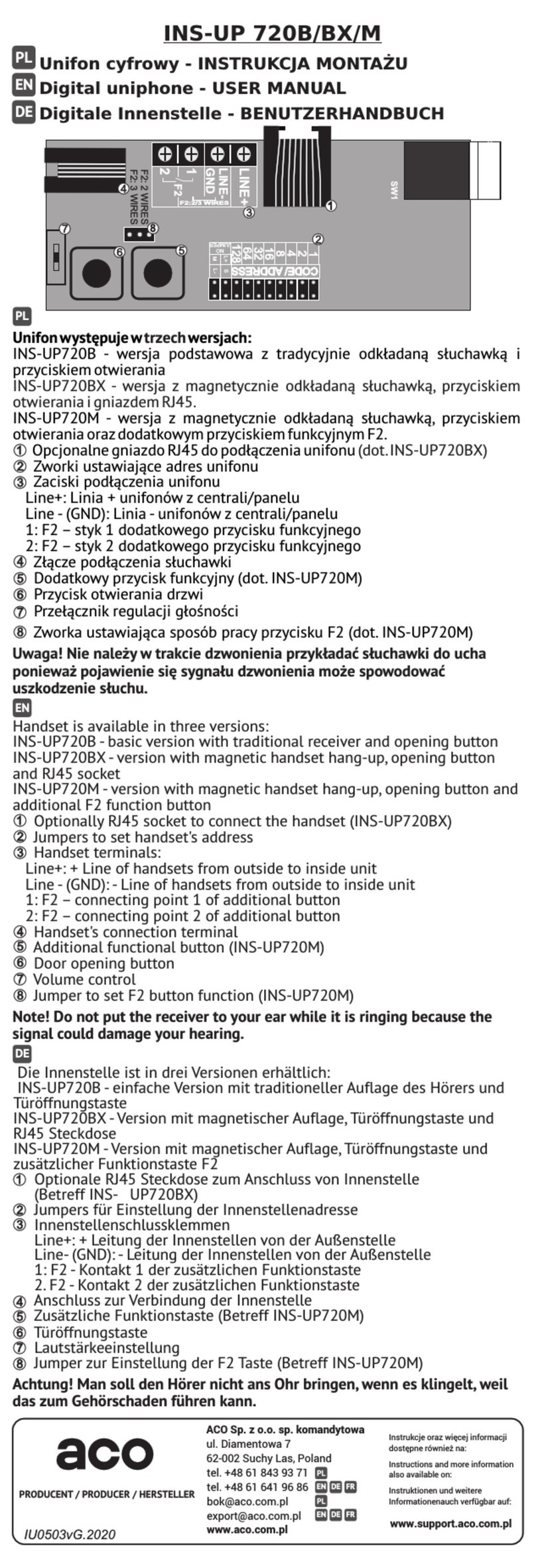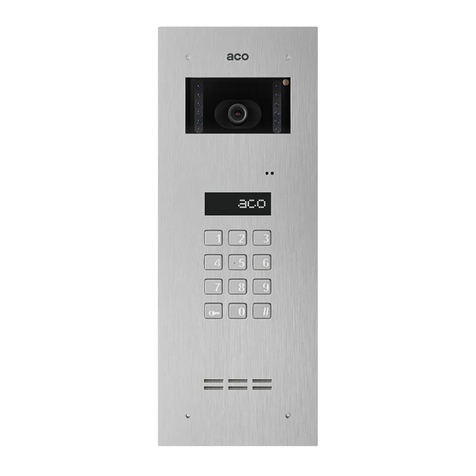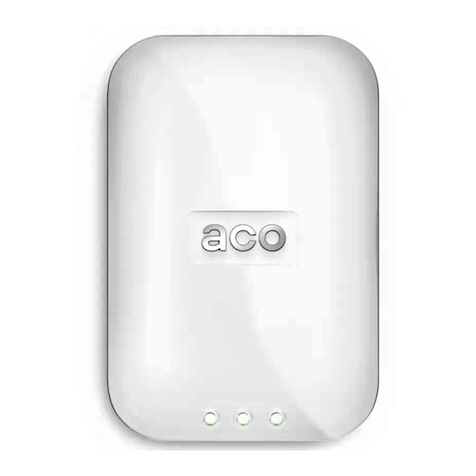
OPERATION
The panel will ringing upon pressing the call button, as long as the system features a receiver with the address is assigned to the pressed button.
If no such receiver is present, the panel will not ring and will generate a busy signal. By default, the buttons ring addresses from 1 (lower button) and 6
(top upper button), and this can be freely changed via the PC application from 0 to 1023, where 0 is used to ring all receivers in the system. If the system
features a receiver, which is set to address 0 (so called broadcast; default setting of receivers) the panel will call it using any call button. By default the
ringing tone lasts 45 sec. and if a call is received on the receiver during this time, a voice connection is possible (by default, the connection can take 4
minutes).
Door opening (typically activation of the E-lock connected to the ELOCK output) can be done from the receiver (the "key" icon) or from the panel
bringing the entered proximity key fob to the window, as well as using optional external button connected directly to the panel (INPUT terminal or PRO-
I/O-60 module).
When the door is opened with the key fob, a soft beep will be heard in the receiver. The panel will give a short triple beep when trying to use a
key fob which is not registered.
Using the PC application the opening time can be set to between 0.6s and 25s (by default 4s) and the delay to between 1s and 25s (by default
0) after which the door will open from the moment of pressing the external button connected to the INPUT terminal of the panel.
When two panels are connected, the master panel always has priority and performs all functions by default, for instance in standby mode it will
open the door or start a call. When ringing and during conversation the calling panel will automatically broadcast the image and the door can be opened
using only that panel. Only one panel can be used to call, the other panel will generate a busy signal when trying to use it.
ADDING AND REMOVING PROXIMITY KEY FOBS
Adding and removing the key fobs is most conveniently done directly on the panel, using the "Master" key fob, which is always the first one
added, independently for each address/call button. A maximum of 10 key fobs can be added for each address/call button. Proximity key fobs can also be
managed using the PC application (PRO 3 MANAGER) for easy adding and removal of key fobs, for backups as well as for transferring stored key fobs
to other panels.
PLEASE NOTE! For panels supplied with two key fobs (master and regular) these key fobs are already registered so point 1 can be skipped. The panel
will give a short triple beep when trying to use a key fob which is not registered.
1. In order to add the "master" key fob, turn off the panel power supply, press the call button that corresponds to the address for which the key fob needs
to be added and then (while holding the button) turn the power back on. The panel will generate a continuous tone, which means that all key fobs added
to the address/call button have been deleted - then release the button. The panel will start to generate a fast intermittent tone - during this time apply the
master key fob to register it. When applying a registered key fob the door will open immediately.
2. To register another key fob, not yet registered, apply it together with the “master" key fob (to the same address as the master key fob). It must be done
within approx. 5s from starting the opening with the master key ring, otherwise the panel will terminate key fob adding. When key fob registration is
successful, a short continuous beep will be heard.
3. In order to delete all key fobs added to the address/call button, press and hold the call button when opening using the master key fob until the panel
starts generating fast intermittent sound - then release the button. All key fobs will be deleted, including the master key fob. If during this fast intermittent
sound the key fob is applied it will be added again as a master key fob (similarly to point 1) When deleting key fobs added to address/call button, remember
to open the door with the "master" key fob assigned to that address/call button and also press the button used to call that address.
4. The panel can also support 10 administrator’s key fobs, not assigned to any receiver address. Adding an administrator’s key fobs is only possible via
the PC application.
SYSTEM ASSEMBLY AND CONNECTION
Connect the door entry unit following the diagram in Fig.2 with power off. It is recommended to use RJ45 connectors and twisted-pair cable (UTP min.
cat 5e). In this case, the maximum cable lengths is: 100m between the panel and the power supply and 70m between the monitor and the power supply
(for information on longer connection lengths refer to Fig. 3). All RJ45 connectors must be crimped the same way as per T568B. For an audio system, the
minimum required number of wires between the main module and the receiver is 3 wires (min. wire diameter 0.5 mm / then the maximum distance between
the panel and power supply unit is 50m).
Before turning the power on, make sure that all connections correspond to the diagram, the RJ45 plugs are crimped correctly and no short
circuit is present between wires.
Fig. 1 Example of panel connection diagram in a video system.
If the RJ45 is not used, connect to screw terminals: power supply to +DC POWER and -DC POWER (GND) terminals, signal line (communication
/ audio) to LINE terminal, video signal to the V+ and V- terminals.
Connect the external NO-contact button (“ringing” button) to INPUT and GND terminals; this button will then be used for direct door opening (or
for calling an apartment - after changing the settings via the PC application).
Connect the E-lock to ELOCK OUTPUT terminals (+ and -) and connect its power supply to ELOCK POWER (+ and -). In this case it is
recommended to use wires selected based on the current drawn by the E-lock (typically 1.5mm2) and to ensure the distance according to fig. 3.
